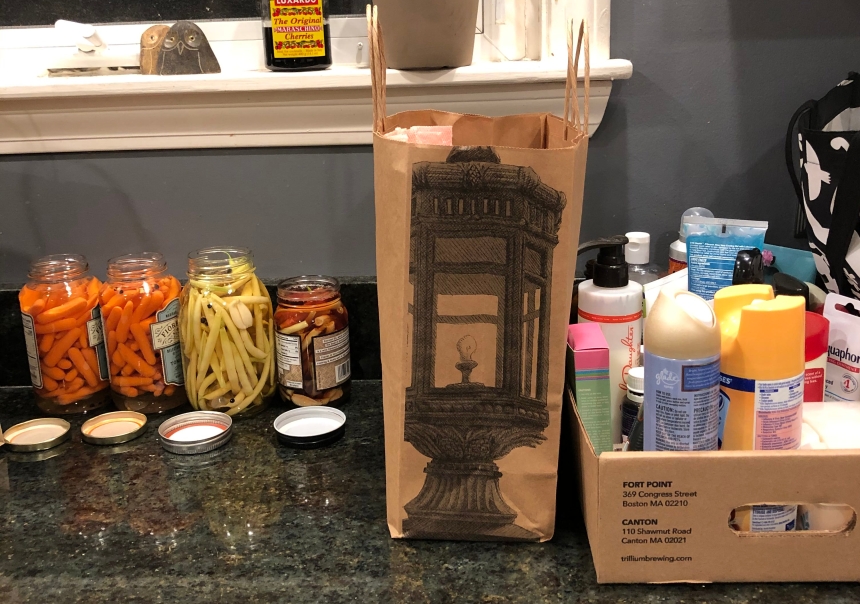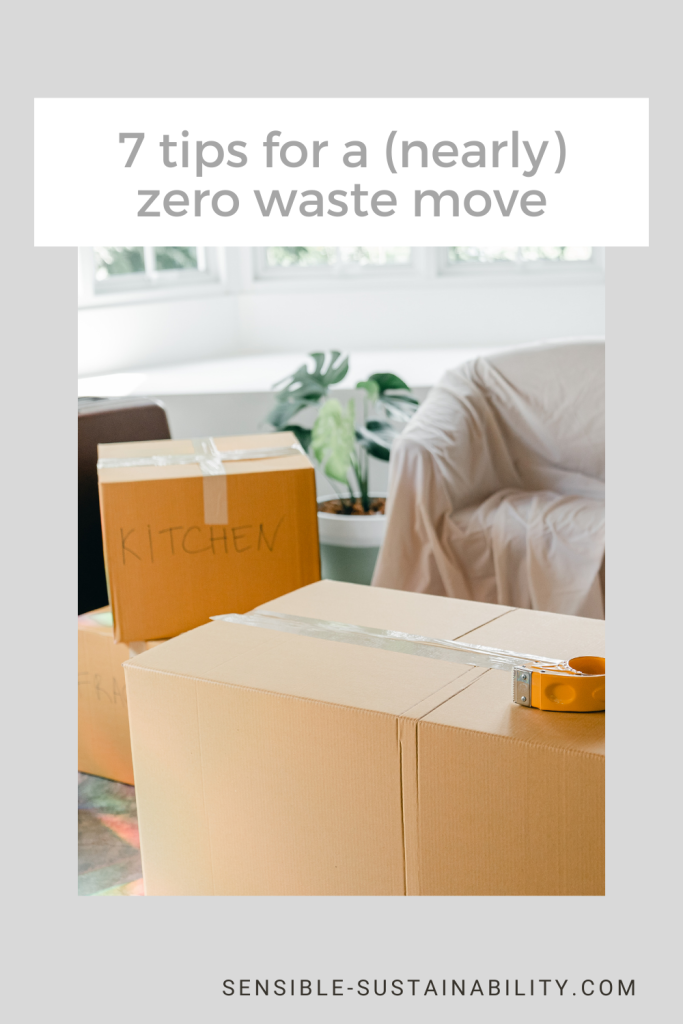Dare I say it: you have not lived in Boston if you haven’t experienced a Sept 1st move.
With such a large student population, the entire housing stock in the city turns over on Sept 1st, and it’s a scene not to be missed: movers are suddenly hot commodities; the U-Haul parking lots are empty; streets are overrun by double parked SUVs, vans, and pickup trucks, meanwhile at least one truck is wedged under a bridge on Storrow Drive (the correct term is “get storrowed”) because the driver has missed the memo about the overhead clearance; mattresses are being carried down the street by people, on bikes, or via grocery store carts…
But most noticeably, the donation bins, trash cans, and recycling bins are overflowing, and furniture, books, plants, you-name-it are littered everywhere on the street. While I appreciate this unique…um…cultural phenomenon, and have personally benefited a great deal through this arrangement (thank you #AllstonChristmas for furnishing much of my previous apartments), it does not have to be this way! With a little planning and effort, you too can achieve a (nearly) zero waste move. Here are 7 tips that I collected from our most recent move.
1. Start early
A lot of what makes a move less wasteful takes time (e.g., looking for used packaging, donating still-functional items), so plan accordingly! If you don’t enjoy spending full days or weekends decluttering, consider purging in chunks. Check out Polly Barks’ “10 in 15 challenge” – where you essentially find 10 items to declutter in 15 minutes. Doing this by room or sections of your house 15 minutes at a time could make the process feel much more manageable.

2. Make a list. Have a plan (and a backup plan)
For me, the items I declutter generally fall into 3 categories:
- Items to gift (e.g., books I have finished reading)
- Items to sell (e.g., a piece of furniture that is in excellent shape)
- Items to dispose responsibly (e.g., a giant bag of used light bulbs that should have been recycled long ago)
Make a list for your items and what you plan on doing with them. Here is a previous post I wrote on how to give away your stuff more thoughtfully. Consolidate your tasks as much as possible. For example, the city of Boston hosts public events several times a year where you can drop off hazardous waste, textiles, and electronics all in one place. In addition, since we are on a timeline here – have a back plan. What will you do with that lovely dining room table that won’t fit your new space, if it doesn’t sell?
3. Stop buying food
A lot of food gets wasted between moves. Admittedly, I know this based on personal experience! As soon as you know when you are moving, hit pause on grocery shopping and evaluate your food situation. (I for one, tend to stock up on cleaning supplies, personal care products, and dried goods whenever I start to run low without thinking through whether I really need it right now.) Eating down your pantry/fridge is a good practice in general, but it’s especially beneficial during a move. There will be less stuff to carry; you’ll reduce waste, and your wallet will probably thank you too.

I cleaned this moldy table and re-finished the top 
And was able to gift it to a neighbor!
4. Go on a scavenger hunt for secondhand boxes
Another idea to reduce waste and save money is to pack with used boxes. Some places I’ve had good luck include:
- Neighborhood groups, Craigslist, Buy Nothing groups. U-Haul Exchange is a message board that lets you find free boxes in your area.
- Restaurants, liquor stores and grocery stores, as they receive their deliveries in boxes. (During a pandemic, it’s a good idea to call ahead before barging in, and make sure you sanitize!)
- If you don’t have time to scavenge for used packaging and don’t mind spending money, consider buying used boxes (through BoxCycle or EcoBox, for example).
- Lastly, moving crate rental is becoming more popular in some cities, so that could be an option as well. This is typically a more expensive option, but the crates are much sturdier since they are re-used many times over. In the Boston area, I’ve heard good things about Boxsave.com.
Just note that if you are using movers, some companies require you to use uniform sized boxes for easier stacking and pricing. So be sure to ask about that if you are thinking about using secondhand boxes!
5. Use what you have
Baskets, chests and other storage items are great to use as extra “boxes” for packing, especially if you plan on moving these items yourself (most moving companies require furniture pieces to be completely empty). Fabric and paper just about any kind can be used as packing materials, so get creative! Scarves and sweaters can be used to cushion tableware, and blankets can be used to fill up large boxes that would otherwise be too heavy. Now it’s also a great time to use up any grocery store paper bags you’ve collected; crumble them up and they are great for protecting pots and pans from scratches.
6. Moving week – make it easy for yourself
Moving week is stressful! Have food ready to heat up for lunch, have snacks, set up the trash and recycling bin nearby as you pack, clearly label the boxes containing the essentials you’ll need immediately post-move, etc. I find that I’m more likely to be in a wasteful head space when I’m overwhelmed: “OMG there is so much left to do” *tosses everything in the trash* “and why am I so hangry!!” *dials number for takeout delivery*…all that is to say, make things easy for yourself, whatever that means. (And if that means finishing everything in your fridge and getting takeout for a few days to minimize time spent on cooking, that’s cool too!)
7. Leave no trace
You know if you leave any items behind, they are unlikely to be disposed properly. Not to mention, you may get charged a fee from your landlord or the new people who have to deal with your trash. So try to give yourself a little time for a walk through and cleanup post-move.

Bonus tip: spread the love!
If you’ve benefited from used packaging during your move, why not offer them to others? Through a local Facebook group specifically made for exchanging packaging materials, I was able to give away almost all the boxes I’ve unpacked so far. And I relished seeing people’s smiles for scoring free packaging!
That’s all – do you have any other tips to make moving less wasteful and stressful? Leave them in the comments! And if you are moving – best of luck!




Leave a comment